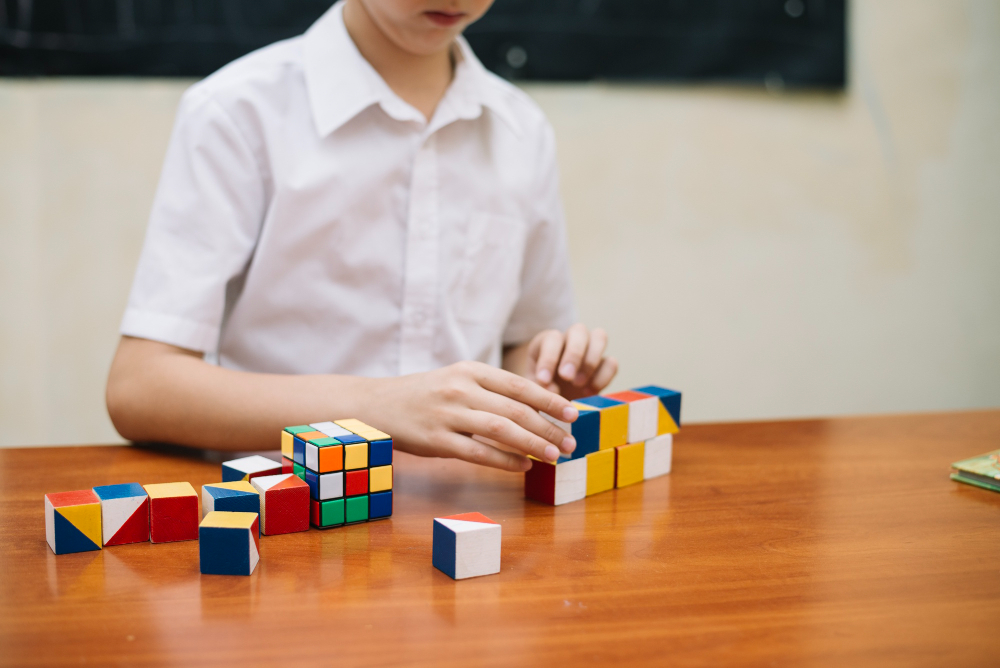The Rubik’s Cube has evolved from a simple puzzle toy to a global phenomenon, inspiring a vibrant community of solvers and competitors. For enthusiasts, participating in a cube competition can be a thrilling experience, offering the chance to showcase skills, meet fellow cubers, and immerse oneself in the competitive atmosphere. If you’re considering entering your first cube competition, understanding how to prepare is crucial. This guide will explore effective Rubik’s Cube tricks, training methods, and essential tips to help you excel at your first event.
Understanding Cube Competitions
Cube competitions are organized events where solvers compete to solve the Rubik’s Cube and other twisty puzzles in various formats. These competitions are typically governed by the World Cube Association (WCA), which sets the rules and regulations for events worldwide.
Competition Formats
Competitions can feature a range of events, including:
- 3×3 Cube: The standard Rubik’s Cube event.
- 2×2 Cube: A simpler variant that offers a different solving experience.
- 4×4 and 5×5 Cubes: Larger cubes that add complexity.
- Blindfolded Solving: A unique challenge where solvers memorize the cube’s layout before attempting to solve it blindfolded.
- Speedcubing: This is the core event where solvers aim to complete the cube in the shortest time possible.
Why Compete?
Participating in a cube competition offers numerous benefits:
- Skill Improvement: Competing encourages you to refine your techniques and strategies under pressure.
- Community Engagement: Competitions provide opportunities to meet fellow cubers, share tips, and form friendships within the community.
- Experience: Competing helps you gain experience in timed solving, which can be invaluable for personal growth and confidence.
- Fun and Excitement: The competitive atmosphere adds an element of thrill and excitement to the hobby.
Preparing for Your First Competition
1. Master the Basics
Before entering a competition, ensure that you have a solid understanding of the basic solving methods and algorithms for the Rubik’s Cube. Here are some essential steps to take:
- Choose a Solving Method: Familiarize yourself with common methods such as the Beginner’s Method, CFOP (Cross, F2L, OLL, PLL), or Roux Method. Find the one that suits your style.
- Learn Key Algorithms: Focus on mastering the essential algorithms that correspond to your chosen method. This includes the algorithms for the last layer, as these are often the most challenging for beginners.
2. Practice Regularly
Consistent practice is vital for improving your speed and proficiency. Set aside dedicated practice time each week and use a timer to track your progress. Here are some strategies to enhance your practice sessions:
- Time Yourself: Use a timer or app to measure your solve times and work on reducing them. Aim for consistent averages rather than just a few fast solves.
- Drill Algorithms: Regularly practice key algorithms to improve muscle memory. Focus on finger tricks and execution speed.
- Simulate Competition Conditions: During practice, simulate the pressure of a competition by timing your solves and following competition rules, such as not looking at the cube until the timer starts.
3. Learn Rubik’s Cube Tricks
Incorporating advanced Rubik’s Cube tricks into your practice can significantly enhance your solving skills and speed. Here are some essential tricks to consider:
- Finger Tricks: Efficient finger movements can drastically reduce solve times. Learn specific finger tricks for commonly used algorithms to improve your speed and efficiency.
- Lookahead: Develop the ability to anticipate your next moves while executing current ones. Lookahead can help minimize pauses between algorithms, leading to faster solves.
- Cross on the Bottom: If you’re using CFOP, practice solving the cross on the bottom layer. This technique can improve your transition into F2L and reduce overall solve time.
4. Familiarize Yourself with Competition Rules
Understanding the rules and regulations of the competition is crucial. The WCA sets standard guidelines for events, and being knowledgeable will help you avoid any surprises. Key rules include:
- Inspection Time: Before starting your solve, you’ll typically receive a set period (15 seconds) to inspect the cube without making any moves. Use this time wisely to strategize.
- Scrambling Procedures: Learn how the cubes will be scrambled. Familiarizing yourself with the scrambles can help you mentally prepare for what to expect.
- Penalties: Understand the penalties for mistakes, such as misalignments or incorrect algorithms. Familiarizing yourself with these can help you avoid errors during the competition.
5. Develop a Competition Strategy
Having a clear strategy for the competition can alleviate nerves and help you perform your best. Here are some considerations:
- Choose Events Wisely: If you’re new to competition, consider participating in events you are most comfortable with. Start with 3×3 and possibly 2×2 before venturing into larger cubes or more complex formats.
- Set Realistic Goals: Establish personal goals for the competition, such as achieving a specific time or simply completing the solve. Setting achievable goals can help reduce anxiety.
- Stay Hydrated and Energized: Competitions can be long and demanding. Bring snacks and water to stay energized and focused throughout the event.
6. Arrive Early and Prepare Mentally
On the day of the competition, give yourself ample time to arrive and settle in. Here are some tips for mental preparation:
- Get Comfortable: Arriving early allows you to acclimate to the environment. Familiarize yourself with the venue, observe how other competitors are handling their solves, and find a comfortable space to warm up.
- Practice Relaxation Techniques: Use deep breathing or visualization techniques to calm your nerves before your solves. Staying relaxed can significantly improve your performance.
- Focus on the Fun: Remember that competitions are about enjoying the experience. Focus on the joy of solving and connecting with fellow enthusiasts rather than just the results.
Post-Competition: Reflection and Improvement
After your first competition, take some time to reflect on the experience. Here are some points to consider:
-
Analyze Your Performance: Review your solves and identify areas for improvement. Did you encounter any unexpected challenges? How can you address these in your practice?
-
Celebrate Achievements: Regardless of your results, celebrate your accomplishments. Completing your first competition is a significant achievement in itself!
-
Set New Goals: Based on your experience, set new goals for your next competition. Consider what specific skills or techniques you want to improve upon.
-
Stay Connected: Engage with the cubing community. Share your experiences, seek advice, and stay motivated by learning from others.
Conclusion
Entering a Rubik’s Cube competition can be an exhilarating experience that challenges your skills and enhances your passion for cubing. By understanding how to solve a Rubik’s Cube, practicing regularly, and utilizing effective strategies, you can prepare yourself to face your first event confidently.
Remember, the journey to becoming a skilled cuber is ongoing. Whether you achieve personal bests or face challenges, each competition will offer valuable lessons and experiences. Embrace the excitement of solving, connect with fellow enthusiasts, and continue to develop your skills. With time, practice, and a love for the cube, you’ll find yourself not only competing but thriving in the vibrant world of cubing. Happy cubing!
Related Posts

FortuneIPTV Review: Affordable, High-Quality Streaming for All Your Favorite Channels
The digital age has revolutionized how we consume media, with…

Naruto Shippuden Filler List: A Comprehensive Guide
"Naruto Shippuden" is one of the most beloved anime series…

7 Must-Try Fresh Cake Flavors From Hong Kong’s Top Online Bakery
Hong Kong is known for its unique blend of Eastern…

